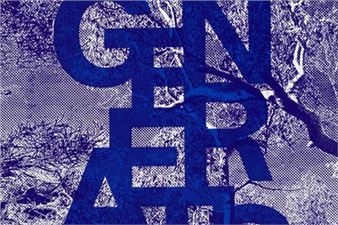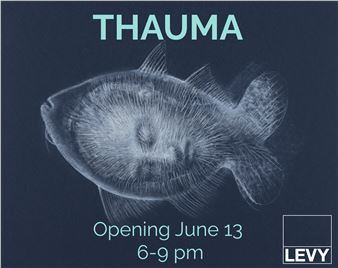The Coming World: Ecology as the New Politics 2030ÔÇô2100
The Coming World: Ecology as the New Politics 2030ÔÇô2100 is a major exhibition project that brings together historical and new works by over 50 Russian and international artists and will occupy the entire museum building. It takes a look at a future already in the making, when the environmental agenda will become one of the main political questions.
The suggested timeline references two widely speculative points in time taken from the sphere of popular science and iconic science fiction: 2030 is suggested as the year when existing resources of oil will be exhausted (Paul R. Ehrlich, Beyond the Limit, 2002), putting an end to the Oil Age; and 2100 denotes the year that, according predictions made by Arthur C. Clarke in the 1960s, human life will be able expand to other star systems. The exhibition alludes to a compressed period of time starting from the not too distant future, when the human race will be forced to live with the final knowledge that ÔÇÿthere is no planet B, ÔÇØ through to future imagined in the past, in which humans were expected to progress sufficiently to be able to settle on other planets.
By looking into the speculative future, the boundaries of which are determined by predictions that are no longer considered accurate, the exhibition highlights the uncertainty of our knowledge about events to come, while suggesting a ÔÇ£performativeÔÇØ understanding of the future as it is being constructed today and shaped by our activities in the present. As theorist and critic T.J. Demos put it in his article Art After Nature (2012): ÔÇ£Just as nature is no longer understood as a pristine and discrete realm apart from human activity, artÔÇØs autonomy is all the more untenable when faced with ecological catastrophe.ÔÇÖ
The Coming World is developed around two main concepts: environmentalism and ecology. The first gives real urgency to the agenda of our relationship to nature, putting forward the idea that still marginalized topics such as climate change, species extinction, pollution, renewable energy, and overpopulation should be central to building alternative patterns of education, consumption, production, and leisure. This also means considering nature in an expanded field and interlinking biological, technological, social and political ecologies. The second concept, ecology, is understood as ecology in action, an insuppressible process where nature, human and other-than-human co-perform, or the world as a performed ecology and an ecology performing itself. This allows us to think of nature in embodied, active, distinctly relational terms whereby production of new knowledge is possible within the transcendent as well as everyday knowing of nature.

Recommended for you
The Coming World: Ecology as the New Politics 2030ÔÇô2100 is a major exhibition project that brings together historical and new works by over 50 Russian and international artists and will occupy the entire museum building. It takes a look at a future already in the making, when the environmental agenda will become one of the main political questions.
The suggested timeline references two widely speculative points in time taken from the sphere of popular science and iconic science fiction: 2030 is suggested as the year when existing resources of oil will be exhausted (Paul R. Ehrlich, Beyond the Limit, 2002), putting an end to the Oil Age; and 2100 denotes the year that, according predictions made by Arthur C. Clarke in the 1960s, human life will be able expand to other star systems. The exhibition alludes to a compressed period of time starting from the not too distant future, when the human race will be forced to live with the final knowledge that ÔÇÿthere is no planet B, ÔÇØ through to future imagined in the past, in which humans were expected to progress sufficiently to be able to settle on other planets.
By looking into the speculative future, the boundaries of which are determined by predictions that are no longer considered accurate, the exhibition highlights the uncertainty of our knowledge about events to come, while suggesting a ÔÇ£performativeÔÇØ understanding of the future as it is being constructed today and shaped by our activities in the present. As theorist and critic T.J. Demos put it in his article Art After Nature (2012): ÔÇ£Just as nature is no longer understood as a pristine and discrete realm apart from human activity, artÔÇØs autonomy is all the more untenable when faced with ecological catastrophe.ÔÇÖ
The Coming World is developed around two main concepts: environmentalism and ecology. The first gives real urgency to the agenda of our relationship to nature, putting forward the idea that still marginalized topics such as climate change, species extinction, pollution, renewable energy, and overpopulation should be central to building alternative patterns of education, consumption, production, and leisure. This also means considering nature in an expanded field and interlinking biological, technological, social and political ecologies. The second concept, ecology, is understood as ecology in action, an insuppressible process where nature, human and other-than-human co-perform, or the world as a performed ecology and an ecology performing itself. This allows us to think of nature in embodied, active, distinctly relational terms whereby production of new knowledge is possible within the transcendent as well as everyday knowing of nature.
Artists on show
- Alexander Obrazumov
- Allan Sekula
- Anastasia Potemkina
- Bill Fontana
- Boryana Rossa
- Critical Art Ensemble
- Dan Perjovschi
- Denis Sinyakov
- Doug Aitken
- Driessens & Verstappen
- DRIFT
- Eadweard Muybridge
- Elin Már Oyen Vister
- Gerry Schum
- Gints Gabr─üns
- Gnezdo Group
- Hans Haacke
- Hayden Fowler
- Helge Jordheim
- Huang Yong Ping
- James Ferraro
- Jennifer Allora & Guillermo Calzadilla
- John Akomfrah
- Jon Rafman
- Karel Dujardin
- Kim Abeles
- Laure Prouvost
- Lawrence Lek
- Le Corbusier
- Lia Perjovschi
- Martha Rosler
- Maurizio Cattelan
- Max Ernst
- Mella Jaarsma
- Mikhail Matiushin
- Numen/For Use
- Oleg Mavromatti
- Pamela Rosenkranz
- Patricia Piccinini
- Peng Yu
- Rimini Protokoll
- Salomon van Ruysdael
- Sascha Pohflepp
- Sergey Kishchenko
- Sun Yuan
- Susan Schuppli
- Tita Salina
- Tomas Saraceno
- Tori Wrånes
- Victor Skersis
Contact details

Related articles
Summer is travel season for many, and museums around the world are rising to the occasion, hosting a bevy of must-see shows.
Top picks for the end of June include bold architectural structures, a celebration of female photographers and a call-to-action on the climate crisis.
Conservation and the fight for our planet occupies the front of collective minds in 2019, and artists are helping to further that narrative.
The Coming World is an ambitious portrait of a dark future in which the world has run out of its resources, but still hasnÔÇÖt found a way to ÔÇ£Planet B.ÔÇØ














